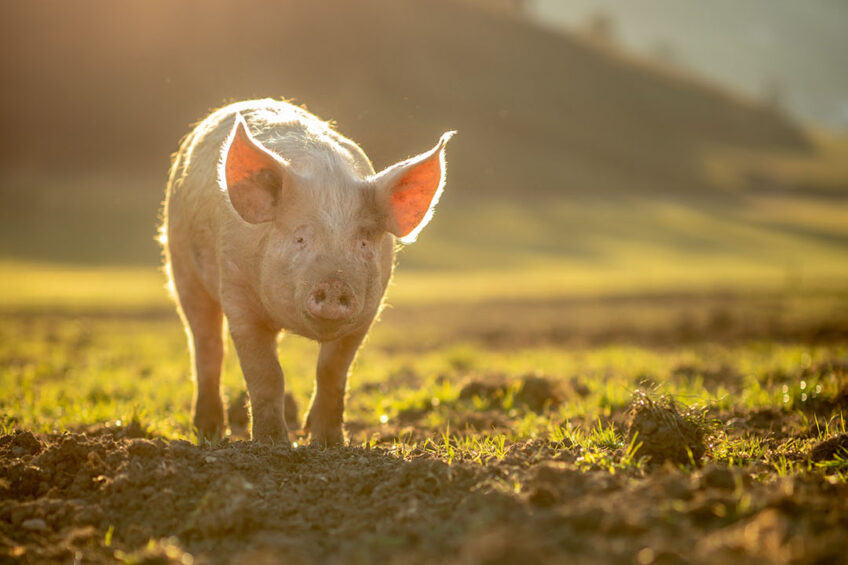Change feed ban: Major change for the industry

Processed animal proteins (PAPs) from non-ruminant species have been re-authorised for use as animal feed, and the use of insect protein as feed for pigs and poultry has been authorised. This is a major change for the feed sector.
In a recent webinar, the International Platform of Insects for Food and Feed (IPIFF) and select guests welcomed the change in the European feed ban and discussed the expected impact of the authorisation. IPIFF is the umbrella association of the European insect sector.
Strict rules still apply
“The last flexibility introduced in the feed ban was in 2017 with the authorisation of insect PAP to feed fish,” said Fabien Schneegans, policy officer of the European Commission. Schneegans was heavily involved in the EU discussions that led to the authorisation of insect proteins for poultry and pig feed. The main drive behind the relaxation is to lift any regulatory constraints that are no longer justified.
Another contributing factor is the implementation of the Farm to Fork strategy, which aims to reduce the EU protein deficit and pushes for a more sustainable EU food system by optimising recycling and valorising under-used resources. “It’s a significant improvement of the picture,” he added. “However, what I would like to highlight here is that nevertheless, the European feed ban is still much stricter than what is currently applied in the rest of the world.”
There will be a zero-tolerance policy for cross-contamination, warned Schneegans. Industry stakeholders will need to pay attention to all phases of the supply chain, including transport, processing plants, production and storage. Schneegans strongly advised those involved in the insect protein market to avoid the use of ruminant material to eliminate the risk of cross-contamination. Products should be channelled specifically for aquaculture, pigs and poultry, he said. There will be an adjustment period so that members of the value chain can become familiar with the new rules and testing protocol.
Alternative for soy
António Tavares, chair of the pig-meat working group at Copa-Cogeca, the umbrella organisation that represents European farmers and agricultural cooperatives, said European pig farmers welcome the decision. “If it was not for the Farm to Fork strategy, we would never have had approval for PAPs in feed,” he said. “Because this was a political decision, not a scientific decision.”
However, the adoption of PAPs, including insects for feed, addresses several problems, said Tavares. While soy is a valuable source of protein, much of it is shipped from abroad, which gives it a heavy environmental footprint. In some soy-producing countries, such as Brazil, soy production even leads to deforestation.
While European programmes have tried to promote the production of vegetal protein on the continent, so far, these have failed. Furthermore, rapeseed protein is not suitable for pig production and, although beans and peas are, they are produced in very small quantities in Europe. Insect protein provides a good alternative for farmers, especially with respect to current soy prices, which are very high. Insect protein prices can be high as well, but with the opening up of the market, Tavares expects prices to drop in future.
A natural feed for poultry
Paul-Henri Lava, Senior Policy Advisor at AVEC, the association for poultry processors and poultry trade in Europe, said the sector also welcomes the decision. AVEC recently announced that it is working on a sustainability charter that will be launched by the beginning of 2022. “But insect protein must be competitive, provide the required nutritive elements, have a lower impact on the environment than, say, soy, and it must be acceptable to society. Lava doesn’t think there will be any issues with the latter because insect protein is part of the natural diet of chickens.
In response to the announcement, AVEC members had numerous questions for insect producers. They wanted to know more about the cost in comparison to soy, and whether or not they had measured the environmental footprint of the 2 feed sources. They had questions about the bioavailability of insect protein, about the form in which it would be served (pellets or powder) and how the feed source would fit into the ration, nutritionally speaking.
Trials indicate that poultry species prefer diets that contain insects, possibly for their taste and nutritive value, and that those diets are highly digestible. Less research has been conducted in the pig sector, but preliminary reports suggest that insect species contain bioactive components such as lauric acid, antimicrobial peptides and chitin, which have immunostimulatory properties in piglets.
Solution to food waste
French insect producer and IPIFF Chair of the Working Group on Feed Hygiene, Christophe Trespeuch, was on hand to answer some of those questions. He pointed out that insect farming actually provides solutions to key European and global challenges, including reliance on food imports and the need to feed a growing population while limiting the expansion of agricultural land. Furthermore, reliance on insect protein addresses issues around food waste. Up to one-third of food waste generated in the EU could be avoided if products intended for human consumption were valued before they were considered food waste, said Trespeuch.
Trespeuch said insects are farmed in a vertical system that makes efficient use of resources. “According to IPIFF members’ estimations, insect farming produces up to 100 times more protein than plant-based protein for the same area of land,” he said. Of course, those values are dependent on several factors, including the species farmed and the technology used on the farm.
Growth outlook
Insect production in the EU today represents just a few thousand tonnes and accounts for investments of more than €1 billion. This figure, said Trespeuch, is expected to exceed €3 billion by 2025. IPIFF published a market factsheet that provides an update on the status and development of the European insect sector and its capacity. In it, the organisation discussed the development of organic standards and the use of insects in organic farming, as well as the diversification of authorised substrates for insect farming.
“Those 2 opportunities will play a major role in upscaling production capacity and hopefully positively impact the price positioning of the insect meal,” said Trespeuch. Currently, a significant proportion of insect production is going to the pet food market, as well as to aquaculture. Trespeuch expects that poultry and pigs will significantly expand that market, exceeding current production for the former sectors. Of course, this will only be possible if the regulatory process makes expansion possible.
Collaboration is key
Trespeuch said the insect farming community is not worried about public acceptance. In a recent survey, IPIFF found that 70% of those surveyed responded positively to the use of insect protein in pig feed. The insect sector is expected to become an important link in the agri-food chain in Europe by the end of the decade.
In order to achieve this goal, though, Trespeuch said that it would be important to strengthen collaboration between insect feed producers and their supply chain partners. The aim is to contribute to growth in the organic sector in the EU. This, he said, will only be possible if new regulatory opportunities are unlocked.







